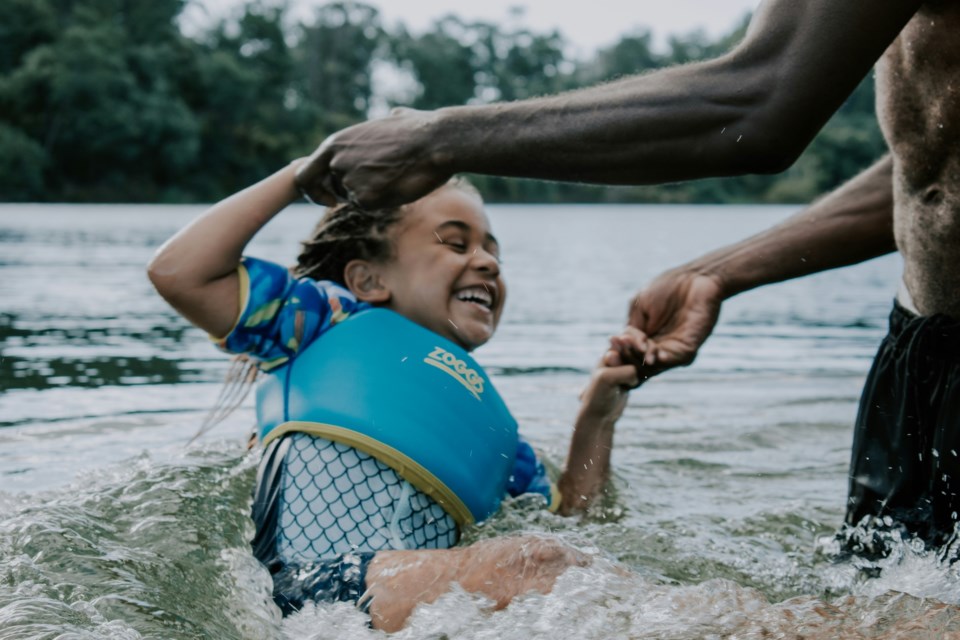This summer, several Albertans will likely lose their lives to drowning. Alberta Blue Cross and the Lifesaving Society of Alberta and Northwest Territories want to change that.
“We have a short summer season in Alberta and it’s a great time to get out swimming, boating and spending time around open water,” the senior vice-president of Corporate Relations and Community Engagement with Alberta Blue Cross Brian Geislinger said. “But unfortunately, many Albertans don’t recognize the risk of drowning or take adequate precautions to stay safe.”
Alberta Blue Cross has an active interest in health promotion and injury prevention—which includes preventing drownings. Drowning is a silent and swift threat that claims the lives of 450 Canadians each year, according to the 2024 National Drowning Report. These deaths that are often preventable with simple, proactive steps.
This National Drowning Prevention Week, Alberta Blue Cross and the Lifesaving Society Alberta and Northwest Territories are encouraging Albertans to take action to protect themselves by understanding the risks and practicing water safety.
National Drowning Prevention Week is the third week of July every year, coinciding with Canada’s peak drowning period. This week promotes awareness of the need for individuals, communities, organizations and governments to take action in an effort to save lives—with a focus on a different key message each day.
“This year, National Drowning Prevention Week is focusing on staying safer together,” the director of Communications and Public Education with the Lifesaving Society Alberta and Northwest Territories Madison Lalonde said. “We encourage you to discuss these important topics with your loved ones throughout the week, and to integrate at least 1 of these safety measures this summer. Safety is a shared responsibility. Anyone can drown. No one should.”
National Drowning Prevention Week drowning prevention and awareness tips are mentioned below.
- July 20—fatal and non-fatal drowning: drowning doesn’t always look like an emergency, and too often, it happens when someone is alone. Never swim alone. Swim with a buddy, keep an eye on one another and be ready to call for help.
- July 21—open water: 67 per cent of drownings occur in natural bodies of water like lakes, rivers, and oceans. Open water adventures are always better with friends. Explore the great outdoors as a team, look out for each other and make safety a shared priority.
- July 22—pool safety: only 1 per cent of drownings occur in lifeguard supervised settings. Lifeguards are your ultimate poolside companions. Swim in supervised settings where professionals are on watch. If you have access to an unsupervised pool, always swim with a buddy, maintain active supervision and keep rescue equipment nearby.
- July 23—Swim to Survive: many drowning victims never intended to enter the water. Could you survive an unexpected fall into water? Swim to Survive is a Lifesaving Society program that focuses on developing the skills to survive a sudden fall into deep water through the following 3 simple techniques:
- Roll into deep water—this skill teaches you how to recover and reorient yourself should you take a sudden fall into deep water.
- Tread water for 1 minute—this skill trains you to support yourself above the water while you catch your breath and get your bearings.
- Swim 50 metres—this skill helps you build up the endurance needed to swim back to safety.
Swimming is a lifesaving skill learned best together. Take lessons as a family or support a child's water confidence. Make swimming a shared experience.
- July 24—supervision: the 2025 Alberta Drowning Report states that from 2017 to 2021, 100 per cent of fatal drownings involving children under 5 years of age occurred due to absent or distracted supervision.
Kids need more than just a lifeguard—they need you. Active supervision requires parents to be within sight, earshot and arm’s reach of a child at all times. Always directly supervise children in, on and around the water—if you are not within arm's reach, you've gone too far.
- July 25—substance use: alcohol consumption is a major risk factor in many boating and swimming fatalities. Both alcohol and cannabis can impair balance, judgement and reflexes. Their effects are heightened by environmental factors such as sun exposure, wind, waves and dehydration, making it more difficult to get out of trouble.
Your safety depends on clear judgment. Make smart choices, celebrate responsibly and save the party for after the water.
- July 26—boating safety and Personal Floatation Devices (PFDs): from 2017 to 2021, 69 per cent of boating-related deaths involved capsizing or falling overboard. Life jackets are like seat belts—they only work if you’re wearing them. By the time you need a life jacket, it’s often too late to put one on.
Life jackets should be worn by everyone while boating, during aquatic activities such as paddle boarding and in hazardous aquatic environments such as on ice or around rivers. Weak swimmers or non-swimmers should always wear a life jacket when in, on or around the water. Better safe than sorry.
Safety starts with a simple step—remind everyone to buckle up their life jackets. Whether you’re boating, paddling or fishing, a life jacket can save a life. Look out for each other and make safety a priority on the water. Choose it, use it.
For more information about National Drowning Prevention Week, please visit www.lifesaving.org.




